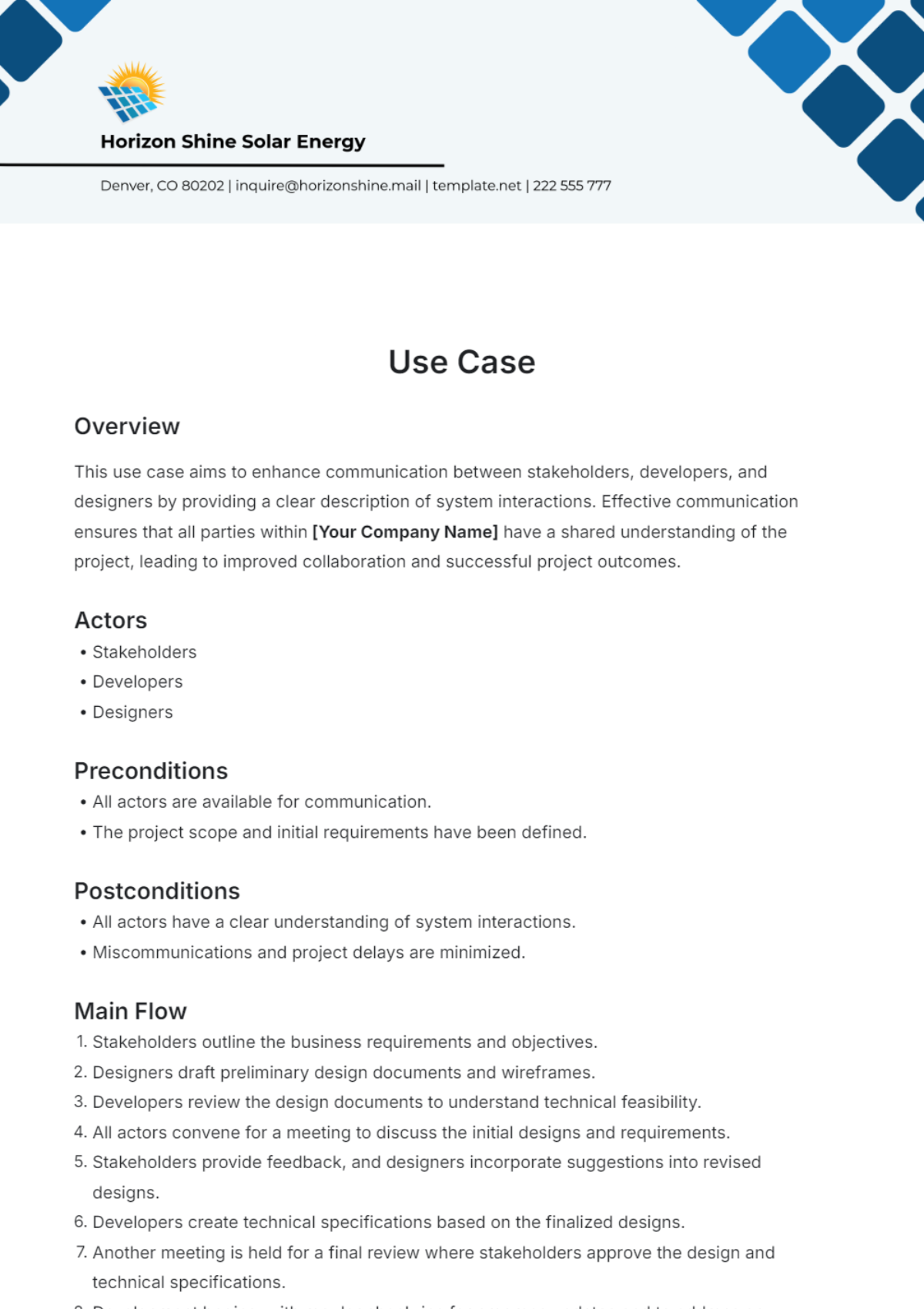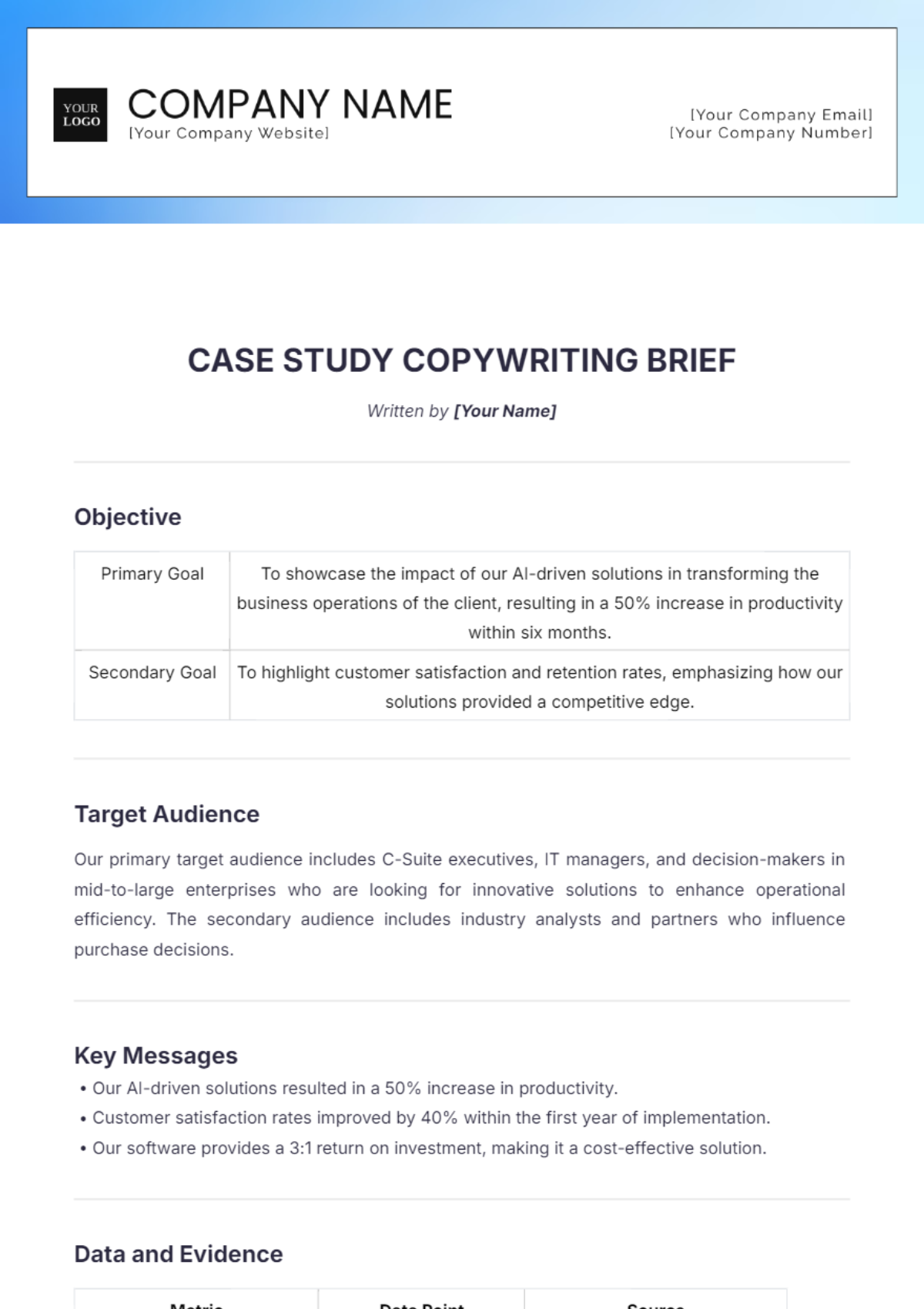Sample Case Study
I. Introduction
Background
[Your Company Name], a mid-sized player in the retail industry, faced significant market pressure due to the rapid digitization of consumer habits and the increasing dominance of e-commerce giants. Established in 2052, [Your Company Name] has traditionally relied on its brick-and-mortar stores to drive sales. However, with the shift in consumer preferences towards online shopping, the company recognized the urgent need for digital transformation to remain competitive.
Company Industry: Retail
Company Size: 50 stores nationwide
Market Position: Known for personalized customer service and high-quality products
Objectives
The primary goal of [Your Company Name] was to seamlessly integrate digital technology into all areas of its business, transforming how it operates and delivers value to customers. Specifically, [Your Company Name] aimed to:
Objective 1: Increase online sales by 40% within the first year of launching the e-commerce platform.
Objective 2: Enhance customer engagement and satisfaction through personalized online shopping experiences.
II. Problem Statement
Despite its strong reputation for quality and service, [Your Company Name] was losing market share to online retailers. The company's limited online presence and lack of e-commerce capabilities were identified as critical weaknesses, with the following challenges being particularly detrimental:
Challenge 1: Inadequate digital infrastructure to support e-commerce, resulting in missed sales opportunities and decreased market competitiveness.
Challenge 2: Lack of data-driven insights into customer preferences, hindering personalized marketing efforts and impacting customer loyalty.
III. Solution
Approach and Implementation
To address these challenges, [Your Company Name] embarked on a comprehensive digital transformation project. The approach was multifaceted, focusing on building a robust e-commerce platform, implementing advanced data analytics for customer insights, and training staff on digital customer service techniques.
Strategy: Develop a user-friendly e-commerce platform that integrates with existing physical stores.
Implementation Steps
Step 1: Partner with a technology firm to design and launch the e-commerce site.
Step 2: Implement a CRM system for capturing and analyzing customer data.
Step 3: Launch a series of digital marketing campaigns to drive traffic to the new platform.
Tools and Technologies Used
FutureRetail utilized several key tools and technologies to drive its digital transformation:
CRM System: For gathering and analyzing customer data to tailor marketing efforts.
E-commerce Platform: Custom-built website with integrated inventory management for real-time stock updates.
IV. Results
Outcomes
The digital transformation initiative led to remarkable outcomes for [Your Company Name]:
Quantitative Outcome 1: Online sales increased by 50% within the first year, surpassing the initial goal.
Qualitative Outcome 2: Customer feedback highlighted an appreciation for the seamless shopping experience across online and physical stores.
Key Learnings
The project provided [Your Company Name] with several key insights, including the importance of aligning digital strategies with overall business goals and the value of leveraging data for personalized customer experiences.
Learning 1: Early and ongoing engagement with technology partners can accelerate digital projects.
Learning 2: Continuous investment in digital skills for employees is crucial for maintaining competitive advantage.
V. Conclusion
Summary
[Your Company Name]'s digital transformation journey underscores the critical need for traditional retailers to adapt to the digital age. By embracing technology and data, [Your Company Name] not only reversed its declining market share but also set a new standard for customer service in the retail industry.
Future Directions
With the initial phase of digital transformation complete, [Your Company Name] plans to explore advanced technologies such as AI and machine learning for predictive analytics and further personalization of customer experiences.
Next Steps: Enhance the mobile shopping experience and expand into new markets.
Long-Term Vision: Become the leading omnichannel retailer in the industry, known for innovation and exceptional customer service.
VI. Appendix
Further documentation, including detailed project timelines, budget breakdowns, and customer testimonials, is available upon request. These documents provide deeper insights into the strategic planning and execution phases of the digital transformation initiative.
Appendix A: E-commerce Platform Development Timeline
Appendix B: Customer Testimonials on Shopping Experience
Prepared By:
[Your Name]
[Your Position]
[Your Department]
[Your Company Email]

















































